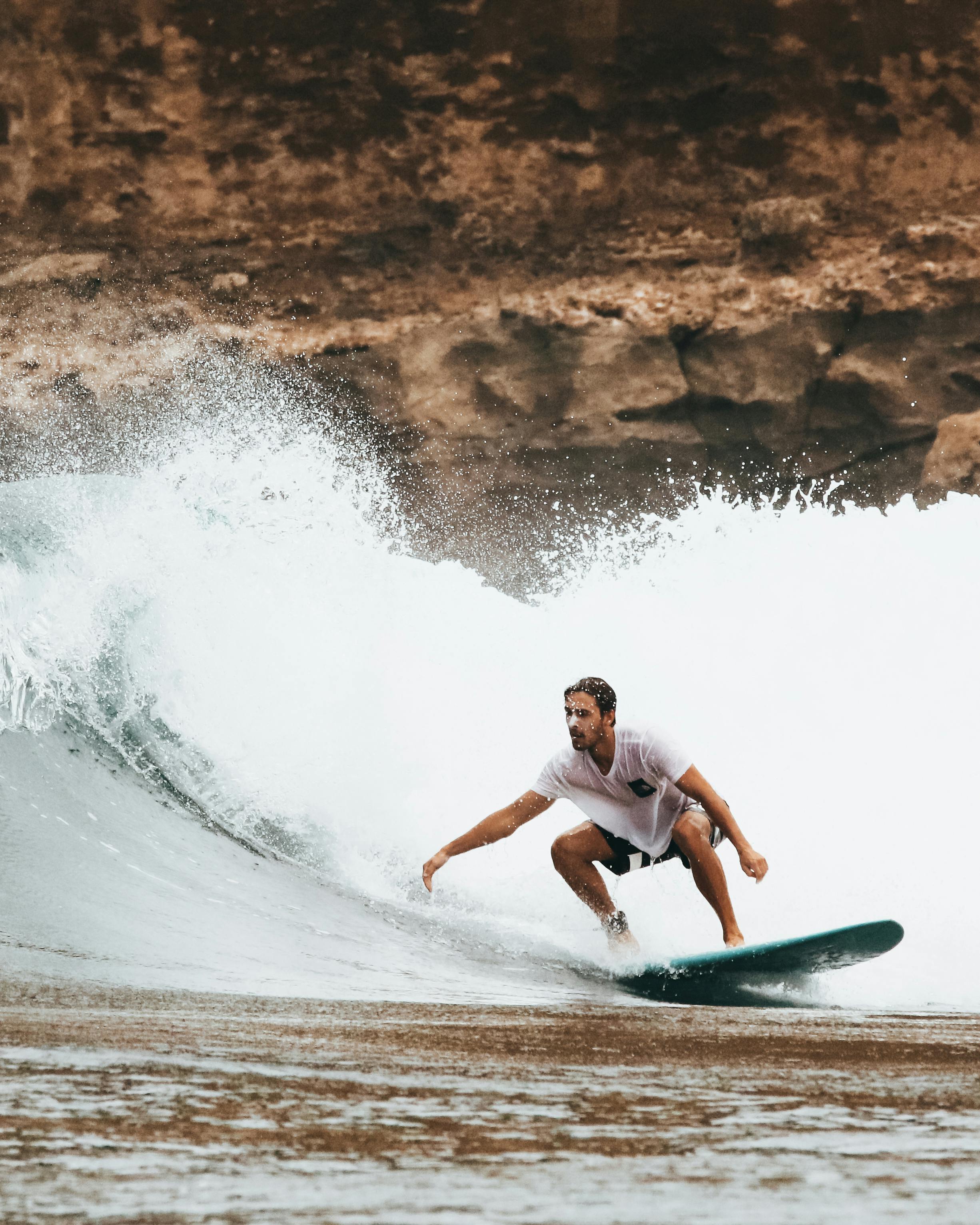
Hey there, future wave rider! So you've decided to take the plunge into the magical world of surfing. I still remember my first time paddling out—equal parts terrifying and exhilarating. The ocean has a way of humbling you while simultaneously offering one of life's greatest natural highs.
But before you can experience that indescribable feeling of gliding across water, you need the right equipment. And let me tell you, choosing your first surfboard can be overwhelming. Walk into any surf shop and you'll face a wall of options with strange names like "fish," "gun," and "egg." Don't worry—I'm here to break it down for you in human terms, not surf jargon.
Why Your First Board Matters (A Lot)
I learned this the hard way. My first board was a sleek 6'2" performance shortboard that the cool guy at the surf shop convinced me was "what everyone rides." Three frustrating months later, I had barely stood up once and was ready to quit. Don't make my mistake!
The truth is, learning on the wrong board can mean the difference between catching waves on your first day or spending weeks just trying to stay balanced. The right board will accelerate your progress exponentially.
Foam is Your Friend: The Beginner's Best Bet

If there's one piece of advice I'd write in the sky for every beginner, it's this: start with a foam board (also called a "soft top" or "foamie"). Here's why:
- They're super stable. The extra volume and width make balancing so much easier.
- They're forgiving. Wiped out and the board hit you? With foam, it's usually just a laugh instead of a hospital trip.
- They catch waves easily. More wave time equals faster learning.
- They're affordable. Why spend $800+ on a fiberglass board you'll outgrow in a few months?
My top recommendation for most beginners is an 8-foot foam board. Brands like Wavestorm, Catch Surf, and Softlite make great options that won't break the bank. I've seen complete beginners stand up on their first day with these boards!
Quick Tip:
If you're under 5'5" or weigh less than 130 pounds, you might want to go with a 7-foot foam board instead. If you're over 200 pounds, consider a 9-footer for extra flotation.
Beyond the Foam: When You're Ready to Progress
After a few months of consistent surfing on your foam board, you might start feeling its limitations. That's normal! When you can consistently catch waves, pop up smoothly, and make basic turns, it's time to consider your next step.
For most progressing beginners, I recommend one of these options:
The Minimal Longboard (7'6" - 8'6")
This is my personal favorite transition board. It's stable enough to catch plenty of waves but responsive enough to start learning proper turning techniques. Look for something with a rounded nose and at least 2.5 inches of thickness.
The Funboard/Egg (7' - 7'6")
A little more maneuverable than the minimal, these egg-shaped boards offer a nice middle ground between stability and performance. They're great if you want to develop a more dynamic surfing style.
The Fish (5'10" - 6'6")
For athletic beginners who've progressed quickly, a wide, thick fish can be a fun step up. They're shorter but still offer plenty of volume to catch waves easily.
Listen to Your Body, Not Your Ego
I've seen too many beginners rush to smaller boards because they think it looks cooler. Trust me, nothing looks less cool than not being able to catch waves! Your height, weight, fitness level, and even the type of waves at your local beach all factor into what board will work best for you.
When I teach friends to surf, I always remind them: surfing isn't a race. Some people might progress faster than others, and that's okay. The ocean will always be there, waiting for you to improve at your own pace.
My Personal Journey: Boards That Shaped My Surfing
I started on a borrowed 9'2" longboard that was yellowed with age but caught waves like a dream. After a few months, I moved to an 8'0" funboard where I really learned to turn. A year later, I was riding a 6'6" fish that I still have today for smaller days.
The point is, everyone's journey is different. I've seen people who stuck with longboards forever because that's what brings them joy. Others progress quickly to shortboards. There's no right or wrong path—just what works for you.
Finding Your Volume Sweet Spot:
A good rule of thumb for beginners is to ride a board with volume (in liters) that's your weight in kilograms plus 15-20. So if you weigh 70kg (154lbs), look for a board around 85-90 liters.
Caring For Your First Board
Once you've got your board, show it some love:
- Rinse with fresh water after each session
- Store out of direct sunlight
- Carry it properly (not under your arm by the rails)
- Check the fins before paddling out
Even foam boards need care. Treat your equipment well, and it'll serve you better and longer.
The Most Important Advice: Just Get Out There
At the end of the day, the best surfboard for beginners is the one that gets you in the water most often. Surfing is a practice sport—the more waves you catch, the better you'll get.
I've been surfing for over a decade now, and nothing beats the feeling of gliding across a wave. It's worth every wipeout, every frustrating day, every moment of learning. The ocean has taught me patience, persistence, and presence in a way nothing else has.
So grab that foam board, paddle out, and join the tribe of wave riders. The stoke is waiting for you!